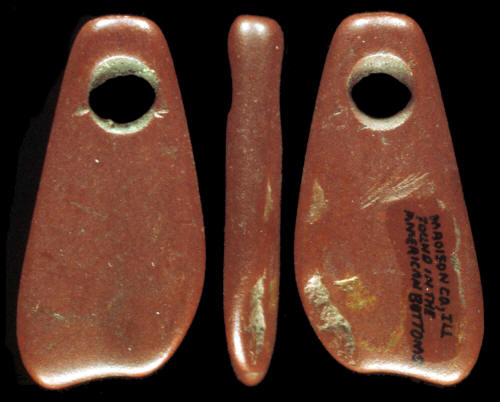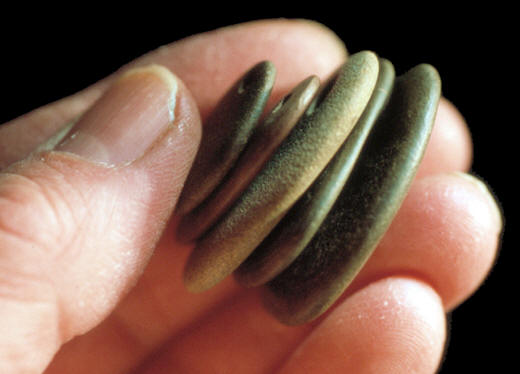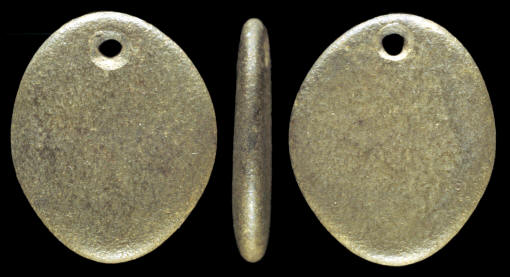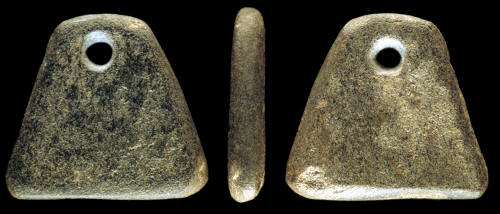|
|
|
Pebble pendants have been found on Archaic sites. Both the Riverton and the Olive Branch sites, in southern Illinois, each produced a pebble pendant but not in a datable context. However, the Eva site in Tennessee and Modoc Rock Shelter in southern Illinois both produced pebble pendants from Archaic features. |
|
|
|
|
Most of the pebble pendants illustrated in this report were drilled from both sides. The holes are biconical in cross-section. They were probably drilled with a stone drill bit that was hafted onto the end of a stick or reed. Simple drilling could have been accomplished by rotating the shaft between the palms or by simply twisting the drill between the fingers. Water and fine grained sand for an abrasive is all that would have been needed to drill these small holes. |
|
|
The majority of the pebble pendants described here were made on unmodified natural pebbles. However, one triangular shaped pendant was ground into shape. Some pendants have been reported to have been engraved with simple lines that, along with the color of the stone, add a little more of a decorative appearance. |
|
|
Most of the pebble pendants in this article were made from granite or slate. One example is made of soft clay stone and two other examples are soft materials that are unidentified. |
|
|
Pebble pendants have been found on prehistoric sites around the world. They represent some of the simplest types of stone jewelry. In North America, these pendants seem to date to the Early Archaic period and later. Although they aren't pretty to look at like today's modern jewelry, pebble pendants probably represent North America's earliest type of stone pendant. Their simplicity is impressive. |
|
|
"REFERENCES"
1910, Moorehead,
Warren K., "The Stone Age In North America," p. 329. |
|




